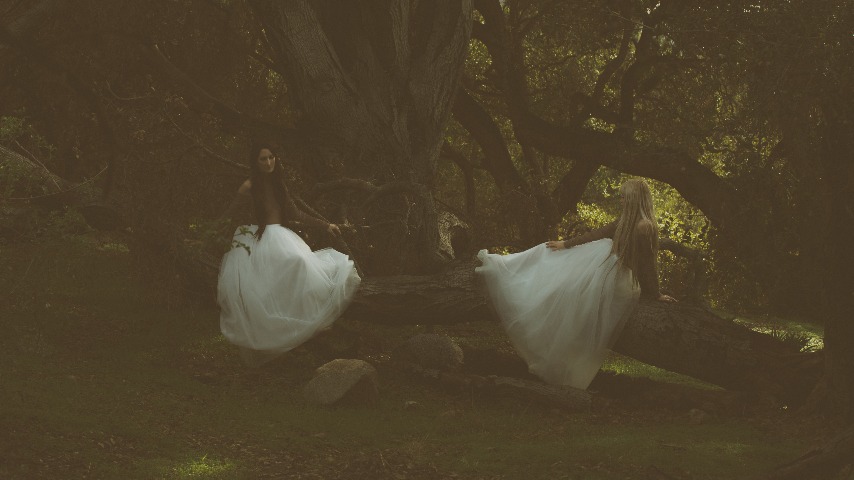Taylor Swift is a gracious pop star. For those who worship her music, disappointment is rare. Throughout the course of her decade-plus career, Swift has been consistently clever in her messaging, filling her feeds, marketing materials and music with Easter eggs for her fans—some more blatant than others—about the meaning and interconnectedness of her lyrics. But she gave them the ultimate gift in 2020: not one, but two surprise albums.
Upon the announcement last Thursday that evermore would join its stellar sister album folklore just 12 hours later, I was admittedly skeptical. In a year shrouded by loss, Swift’s pop theater can feel a little self-indulgent. Her 2020 records stand out for their distinctive lack of the big build-ups that have historically signaled a new “era” for the artist, yet the promotional side still feels fussy. The cunning public relations tactics, expensive merchandise, flurry of music videos and her cozying up to the many music critics who deign to shower Swift with praise—it’s all a bit tiresome and distracting. But the fanfare can’t hide the truth: evermore is a pretty “goddamn” good album.
Swift’s fondness for her new favorite curse word aside, evermore finds her stretching her legs and following in folklore’s dainty footsteps. Gone again are the big hooks and radio-ready singles of her past. The focus here is on the stories, many of which spotlight people other than Swift herself, both real and imagined. Her all-star collaborators on both folklore—released just five months ago—and evermore prominently include The National’s Aaron Dessner, as well as his brother Bryce, and Swift’s Lover producer Jack Antonoff. There’s little doubt that Swift, who is always brimming with new stories but found herself particularly eager to work amid the isolation of the pandemic, could’ve written both albums alone. But this gloriously unlikely combination of people led to the candlelit, “indie”-inspired anthology that defines these two records. Add in Bon Iver’s Justin Vernon, HAIM, “William Bowery” (whom Swift revealed to be her boyfriend Joe Alwyn in Disney’s Long Pond Sessions “concert” film) and The National frontman Matt Berninger, and the stories jump right off the page.
The slightly flashier folklore feels more cohesive than evermore, her ninth studio album, which could have benefitted from a shorter tracklist. Maybe folklore just feels more whole because we heard it first, and at such a crucial moment, but had Swift selected a few songs from each and slotted them into one double album, the results may have been outstanding.
That being said, both records are astonishingly complete when taking into account how quickly they came together. In these songs, we get to know, or maybe just reacquaint ourselves with, Taylor Swift the folk singer (after all, her beginnings in country music were all banjos and breakups). On folklore, there’s the plucky ballad about destiny, “invisible string,” following the equally folksy sizzle reel of infidelity, “illicit affairs.” evermore answers that pair with graceful opener “willow” and another folk song about a forbidden bond, “ivy,” which also contains banjo and a wealth of Swift’s famously far-fetched metaphors (“My house of stone, your ivy grows / And now I’m covered in you”). She’s comfortably settled into a woodsy new world where third-person stories outnumber her own diary entries, not quite reaching the heights of her best album, Red, or the pop mastery of 1989, but creating something equally satisfying. It’s a more restful kind of wealth.
Soft piano, lacy guitar and Aaron Dessner’s distinctive electronic pitter-patter permeate all 15 tracks while Swift steers the carefully crafted tales, one of which, like folklore’s “betty,” is told from the male POV (“dorothea”). Another fictional maiden links up with a fellow wanderer on “cowboy like me,” which may or may not feature backing vocals from Marcus Mumford. The stakes are high on the equally alluring “coney island,” featuring co-lead vocals from Berninger, in which the prevailing emotion is yearning (and the lyric “‘Cause we were like the mall before the internet / It was the one place to be” marks one of Swift’s most Swiftian similes to date). And then there’s “no body, no crime,” a spiky murder mystery in the vein of “Goodbye Earl,” featuring HAIM and an Olive Garden reference.
Elsewhere in evermore’s pages, Swift covers such relatable topics as the hometown fling you just can’t quit (“‘tis the damn season”), the all-consuming flavor of a new crush (“gold rush,” a thumping pop earworm), the meaningful impact of relationships past and present (“happiness,” which she apparently wrote just two weeks ago), and what it feels like to put in way more than you’re getting out (“tolerate it”). Like the turtleneck-clad cast of your favorite Nancy Meyers movie, evermore is filled with magnetic characters, compelling storylines and cozy atmospheres.
While the cheaters, hijinks, scorned women and resulting fan theories make for entertaining pop music, Swift always excels most when she looks inward, like on the so-sweet-it-hurts “marjorie.” It’s one of Swift’s best-ever tracks, in which she relays life advice from her late grandmother Marjorie Finlay, that actually features recordings of the former opera singer as backing vocals. Songs like “marjorie,” “happiness,” “closure” and “tolerate it,” all full of Swift’s hard-won wisdom, are the most representative of what evermore really is: a peacefully intimate record.
When it comes to Taylor Swift albums, hoopla is just part of the deal. Strip away the rainbow of PR pizzazz, and you’re left with a stash of relatable and lasting songs about love and loss. She can’t make every track perfect—few, if any artists can do that—but her newfound creative surge is further proof that everything she releases will continue to demand our attention. Maybe she’s already hiding the next set of eggs now.
Ellen Johnson is a former Paste music editor and forever pop culture enthusiast. Presently, she’s a copy editor, freelance writer and aspiring marathoner. You can find her tweeting about all the things on Twitter @ellen_a_johnson and re-watching Little Women on Letterboxd.




